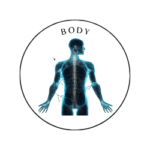 Mind
Mind
- Digital and Modern Well-being
- Mental Health and Emotional Well-being
- Mind-Body Connection and Holistic Health
- Parenting and Family
- Personal Growth and Development
- Relationships and Social Well-being
- Stress and Relaxation
- Therapeutic and Creative Practices
- Trauma and Recovery
- Work, Productivity, and Discipline
 Body
Body
 Fitness
Fitness
 Food
Food
 Beauty
Beauty
Mind-Body Exercises to Relieve Stress

Mind-Body Exercises to Relieve Stress
Incorporating mind-body exercises into your routine is a powerful way to manage stress and promote relaxation. Mind-body practices combine mindful movement, breath control, and meditation, helping to calm the nervous system, reduce tension, and foster a sense of inner peace. Below are some effective mind-body exercises that can help you relieve stress, improve mental clarity, and boost overall well-being.
1. Yoga
Yoga is one of the most popular and effective mind-body exercises for stress relief. Combining physical postures (asanas), controlled breathing (pranayama), and meditation, yoga promotes relaxation, improves flexibility, and reduces anxiety.
- How to Practice: Start with gentle poses like Child’s Pose, Cat-Cow Stretch, and Legs-Up-the-Wall to calm the body and mind. As you progress, incorporate poses like Forward Fold and Bridge Pose, which are known for their calming effects.
- Recommended Styles for Stress Relief:
- Hatha Yoga: A gentle style that focuses on breath, alignment, and mindfulness.
- Restorative Yoga: Uses props like bolsters and blankets to support deep relaxation.
- Yin Yoga: Focuses on holding stretches for an extended period, promoting deep relaxation.
Tip: Aim to hold each pose for 3–5 breaths, focusing on your breath to calm the mind and release tension.
2. Tai Chi
Often referred to as “meditation in motion,” tai chi is an ancient Chinese martial art characterized by slow, deliberate movements. Tai chi promotes mental focus, balance, and relaxation, making it an ideal practice for stress relief.
- How to Practice: Start with a beginner class or follow along with an instructional video. Basic moves like “Parting the Horse’s Mane” and “Grasping the Sparrow’s Tail” can be done by people of all fitness levels.
- Benefits: Tai chi improves body awareness, reduces stress, and promotes relaxation by synchronizing movement with breath, allowing you to focus inward and let go of external worries.
Tip: Practice tai chi outdoors if possible. Being in nature can enhance the stress-relieving effects of this gentle, meditative exercise.
3. Qigong
Qigong (pronounced “chee-gong”) is another ancient Chinese practice focused on cultivating and balancing energy (qi) in the body. It combines controlled movements, meditation, and breath control to reduce stress and improve vitality.
- How to Practice: Begin with a simple Qigong warm-up, such as “Spinal Cord Breathing” or “Bouncing,” where you bounce on the balls of your feet while releasing tension from the shoulders and upper body.
- Benefits: Qigong promotes relaxation, enhances mental clarity, and reduces anxiety by focusing on breath and gentle movements that encourage energy flow.
Tip: Qigong can be practiced indoors or outdoors. Try it in a quiet setting where you can focus fully on your breath and movements.
4. Meditation
Meditation is a powerful tool for calming the mind, improving focus, and reducing stress. There are various forms of meditation, but mindfulness meditation, body scan meditation, and loving-kindness meditation are particularly effective for stress relief.
- How to Practice:
- Mindfulness Meditation: Sit comfortably, close your eyes, and focus on your breath. Notice any thoughts that arise without judgment, returning to your breath each time you get distracted.
- Body Scan Meditation: Starting from the top of your head and moving down to your toes, mentally scan each part of your body, noticing any areas of tension and allowing them to relax.
- Loving-Kindness Meditation: Focus on sending love, compassion, and positive energy to yourself and others, which can improve mood and reduce stress.
Tip: Start with just 5–10 minutes a day and gradually increase the duration as you become more comfortable.
5. Breathwork (Pranayama)
Breathwork, or pranayama in yoga, involves various breathing techniques that help control the breath to calm the nervous system. Deep, slow breathing activates the body’s relaxation response, reducing anxiety and stress.
- How to Practice:
- Diaphragmatic (Belly) Breathing: Place one hand on your abdomen and the other on your chest. Breathe deeply, allowing your belly to rise on the inhale and fall on the exhale.
- Box Breathing: Inhale for a count of 4, hold for a count of 4, exhale for a count of 4, and hold for a count of 4. Repeat for 5–10 cycles.
- Alternate Nostril Breathing: Close your right nostril with your thumb and inhale through the left. Close the left nostril with your ring finger, release the right, and exhale. Repeat, alternating sides.
Tip: Practice breathwork daily or whenever you feel stressed. It’s a quick way to calm your mind and body.
6. Progressive Muscle Relaxation (PMR)
Progressive muscle relaxation (PMR) involves tensing and then relaxing different muscle groups in the body. This exercise helps relieve physical tension associated with stress, promoting a deeper state of relaxation.
- How to Practice:
- Start with your feet and gradually work up to your head, tensing each muscle group (e.g., feet, calves, thighs) for 5–10 seconds, then releasing and relaxing.
- Focus on the feeling of relaxation as you release each muscle group.
Tip: PMR is particularly effective before bed to help you unwind and prepare for restful sleep.
7. Mindful Walking
Mindful walking involves focusing on each step, the rhythm of your breath, and the sensations in your body. This simple practice is an effective way to incorporate mindfulness into daily life, helping you stay present and reduce stress.
- How to Practice: Walk at a slow, natural pace. Pay attention to the sensation of your feet touching the ground, your breath, and your surroundings. Notice each step as you lift, move, and place your foot.
- Benefits: Mindful walking encourages a sense of calm, grounding, and awareness, making it a great practice for relieving stress.
Tip: Try mindful walking in a quiet, natural setting where you can fully immerse yourself in the experience.
8. Guided Visualization
Guided visualization is a mental exercise that involves imagining a peaceful scene, such as a beach, forest, or mountain. This practice can help reduce stress by allowing your mind to “escape” to a calm and relaxing place.
- How to Practice: Find a comfortable seated or lying position, close your eyes, and imagine yourself in a peaceful setting. Engage all of your senses by visualizing the sights, sounds, smells, and feelings associated with this place.
- Benefits: Visualization helps relax the mind, lowers heart rate, and reduces feelings of stress and anxiety.
Tip: Many guided visualization exercises are available as audio recordings, which can be a helpful way to begin if you’re new to this practice.
9. Pilates
Pilates is a low-impact exercise method that focuses on core strength, controlled movements, and breathwork. While it’s more dynamic than yoga, it still emphasizes mental focus and body awareness, making it a great mind-body practice for stress relief.
- How to Practice: Try a beginner Pilates class or follow an online routine. Basic exercises like the “Hundred,” “Leg Circles,” and “Roll-Ups” help build core strength and focus.
- Benefits: Pilates promotes body awareness, reduces muscle tension, and encourages mindful movement.
Tip: Focus on your breath during each movement, inhaling to prepare and exhaling as you perform the exercise.
10. Journaling for Reflection and Gratitude
While not a physical exercise, journaling is an effective mind-body practice for stress relief. Writing down your thoughts, feelings, and daily experiences helps you process emotions, reflect on positive experiences, and reduce mental clutter.
- How to Practice: Spend 5–10 minutes each day writing in a journal. Try gratitude journaling by listing three things you’re grateful for each day, or write about a specific experience or feeling you want to explore.
- Benefits: Journaling can improve mental clarity, reduce stress, and boost emotional resilience by encouraging self-reflection and mindfulness.
Tip: Keep a small journal handy so you can jot down thoughts whenever you feel stressed or need a mental break.
Conclusion: Creating a Mind-Body Routine for Stress Relief
Incorporating these mind-body exercises into your daily routine can make a significant difference in managing stress and enhancing mental and emotional well-being. Start with a few practices that resonate with you, and experiment to find what best helps you relax and recharge. Whether it’s a yoga session, a quick breathing exercise, or mindful walking, mind-body exercises can serve as a powerful tool for reducing stress and achieving balance in your life.
By making time for mind-body fitness, you’re not only enhancing your physical health but also cultivating a sense of peace and resilience that can help you handle life’s challenges with a calm, balanced mind.
